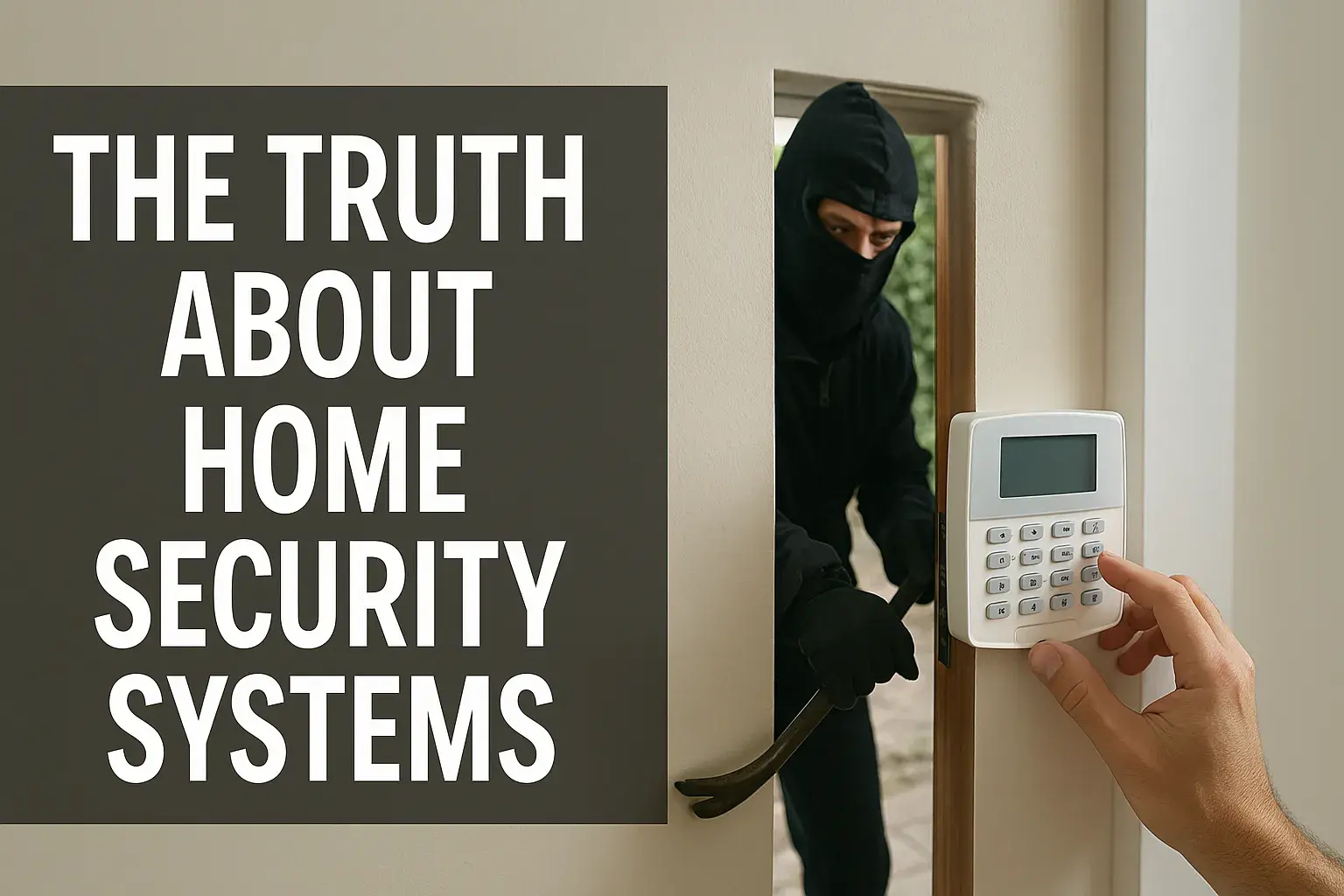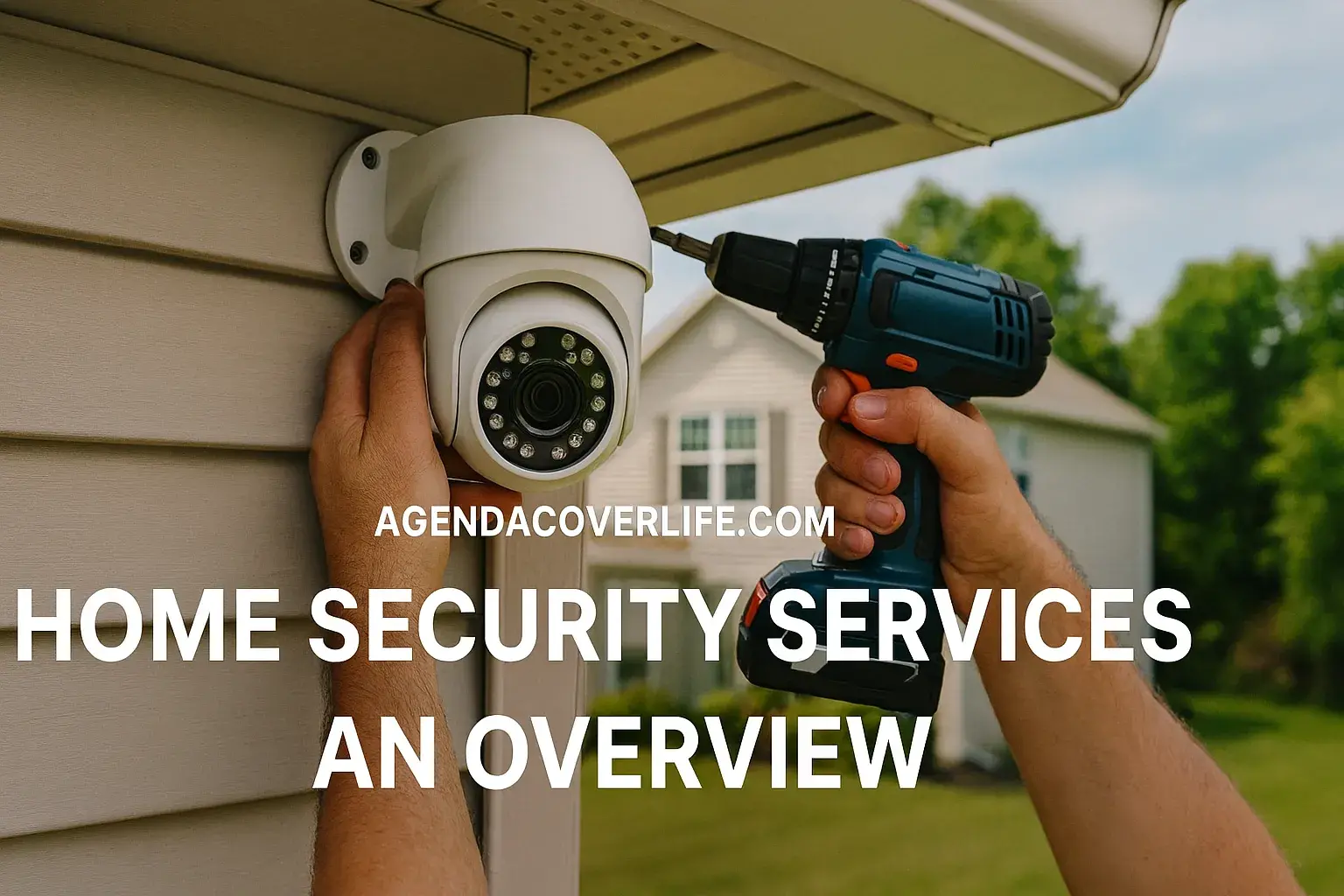In an era where safety is paramount, home security systems have become a cornerstone for protecting families, properties, and peace of mind. But with countless options, conflicting claims, and rapid technological advancements, separating fact from fiction can be daunting. This comprehensive guide dives into the truth about home security systems in 2025, covering their benefits, limitations, costs, and what to consider before investing. Whether you're a first-time buyer or upgrading an existing setup, this article will equip you with the knowledge to make informed decisions.
Why Home Security Systems Matter
Home security systems are more than just alarms and cameras—they're a proactive approach to safeguarding your home. According to recent studies, homes with visible security systems are up to 300% less likely to be targeted by burglars. Beyond deterring crime, modern systems offer features like remote monitoring, smart home integration, and environmental hazard detection, making them versatile tools for modern living.
But not all systems are created equal. Misconceptions about their effectiveness, cost, and complexity often lead consumers to either overspend or skip security altogether. Let’s unpack the realities.
The Evolution of Home Security Systems
Gone are the days of clunky, hardwired alarms that required professional installation and hefty contracts. In 2025, home security systems are sleek, user-friendly, and packed with cutting-edge technology. Here’s a snapshot of what’s driving the industry:
-
Smart Technology Integration: Systems now sync with devices like Amazon Alexa, Google Home, and Apple HomeKit, allowing voice control and automation.
-
AI and Machine Learning: Cameras use facial recognition and behavior analysis to distinguish between threats and benign activity, reducing false alarms.
-
Wireless Connectivity: Most systems are now wireless, making installation a breeze and enabling remote access via smartphone apps.
-
Environmental Monitoring: Sensors detect smoke, carbon monoxide, and water leaks, adding layers of protection beyond theft prevention.
However, this evolution comes with challenges. Increased connectivity raises cybersecurity risks, and the sheer variety of options can overwhelm consumers. Understanding the components of a modern system is the first step to navigating this landscape.
Core Components of a Home Security System
A typical home security system in 2025 comprises several interconnected devices. Here’s what you’ll find in most setups:
-
Control Panel or Hub: The brain of the system, allowing you to arm, disarm, and configure settings. Many now feature touchscreens or voice activation.
-
Sensors: Door/window sensors detect unauthorized entry, while motion sensors monitor movement inside or outside the home.
-
Cameras: Indoor and outdoor cameras offer live feeds, night vision, and cloud storage. Some include two-way audio and AI-driven alerts.
-
Alarms: Sirens deter intruders and alert neighbors. Smart alarms can also notify you and authorities via your phone.
-
Environmental Sensors: These detect smoke, CO, flooding, or extreme temperatures, often integrating with fire and utility services.
-
Smart Locks and Doorbell Cameras: These provide keyless entry and visitor monitoring, enhancing front-door security.
While these components work together, their effectiveness depends on your home’s layout, lifestyle, and the system’s quality. Let’s explore the truths behind common claims about home security systems.
The Truths About Home Security Systems
1. They Deter Crime, But Aren’t Foolproof
Security systems significantly reduce the risk of break-ins, but they don’t eliminate it entirely. Burglars may still target homes with systems, especially if they believe the system is outdated or disabled. Visible deterrents like cameras and yard signs are effective, but determined criminals may test your setup. Pairing your system with good habits—like locking doors and hiding valuables—maximizes protection.
2. Professional Monitoring Isn’t Always Necessary
Professional monitoring services, which alert authorities during an emergency, are often upsold as essential. However, many homeowners thrive with self-monitored systems, where alerts go directly to your phone. Self-monitoring is cheaper and gives you control, but it requires vigilance. If you’re frequently away or live in a high-crime area, professional monitoring (typically $20–$50/month) may be worth the cost.
3. DIY Systems Are as Good as Professional Ones
Brands like Ring, SimpliSafe, and Arlo offer DIY systems that rival professionally installed ones in features and reliability. DIY systems are cost-effective, easy to install, and customizable. However, professional systems from companies like ADT or Vivint may offer more robust equipment and integration for larger homes. The choice depends on your budget and technical comfort.
4. Cybersecurity Risks Are Real
As systems become smarter, they’re vulnerable to hacking. Weak passwords, unencrypted connections, or outdated firmware can expose your cameras or smart locks to cybercriminals. To mitigate risks, use strong, unique passwords, enable two-factor authentication, and regularly update your devices. Choosing reputable brands with strong encryption is also critical.
5. Battery Life and Maintenance Matter
Wireless systems rely on batteries, which need periodic replacement. Neglecting maintenance can render sensors or cameras useless during an emergency. Check battery levels monthly and keep spare batteries on hand. Some systems offer rechargeable or solar-powered options, reducing upkeep.
6. False Alarms Are a Common Issue
False alarms—triggered by pets, delivery personnel, or technical glitches—can desensitize you to alerts or annoy neighbors. AI-powered systems reduce false positives by analyzing patterns, but no system is perfect. Calibrating motion sensors and setting pet-friendly modes can minimize disruptions.
7. Contracts Can Be a Trap
Some companies lock you into long-term contracts with high cancellation fees. Before signing, read the fine print and consider no-contract options. DIY systems often have flexible subscriptions or no monthly fees, giving you freedom to switch providers.
Costs of Home Security Systems in 2025
Cost is a major factor in choosing a system. Here’s a breakdown of what to expect:
-
Upfront Costs: DIY systems range from $100–$500 for basic kits, while professional systems can cost $500–$2,000, including installation. Additional cameras or sensors add $50–$200 each.
-
Monthly Fees: Professional monitoring costs $20–$50/month. Cloud storage for video footage is typically $5–$20/month. Some DIY systems offer free self-monitoring with optional paid plans.
-
Maintenance: Battery replacements and occasional hardware upgrades may cost $50–$100 annually.
-
Hidden Costs: Installation fees, early termination penalties, or premium features (like extended cloud storage) can inflate expenses.
To save money, compare brands, avoid long-term contracts, and prioritize systems with free or low-cost monitoring options. Bundling with smart home devices can also reduce costs.
Choosing the Right System for Your Home
Selecting a home security system requires balancing your needs, budget, and home’s characteristics. Here are key factors to consider:
-
Home Size and Layout: Larger homes need more sensors and cameras. Multi-story homes may require stronger Wi-Fi or range extenders.
-
Lifestyle: Frequent travelers benefit from remote monitoring and smart locks. Families with pets need pet-friendly motion sensors.
-
Budget: Determine your upfront and ongoing budget. DIY systems are ideal for tight budgets, while professional systems suit those willing to invest more.
-
Integration: If you use smart home devices, choose a system compatible with your ecosystem (e.g., Alexa, Google Home).
-
Crime Rate: High-crime areas may warrant professional monitoring and robust equipment.
-
Rental vs. Ownership: Renters should opt for portable, wireless systems to avoid installation restrictions.
Researching brands and reading user reviews on platforms like X can provide real-world insights. Avoid rushing into a purchase—compare at least three systems before deciding.
Top Home Security Systems in 2025
Based on features, affordability, and user feedback, here are some standout systems:
-
SimpliSafe: Affordable, customizable, and contract-free. Ideal for DIY enthusiasts and renters. Starts at $250 with optional monitoring ($20/month).
-
Ring Home Security: Seamlessly integrates with Amazon Alexa and offers versatile cameras. Kits start at $200, with monitoring at $10/month.
-
Arlo Pro 5S: Premium wireless cameras with AI features and 4K video. Best for outdoor security. Starts at $400, with cloud storage from $8/month.
-
ADT: Reliable professional system with 24/7 monitoring. Best for large homes but pricier ($500–$1,500 upfront, $30–$50/month).
-
Eufy Security: No monthly fees, local storage, and AI-driven cameras. Great for privacy-conscious users. Starts at $300.
Each system has trade-offs, so align your choice with your priorities.
Common Myths Debunked
-
Myth: Security systems are too expensive. Truth: DIY systems start at $100, and many offer free self-monitoring.
-
Myth: Only tech-savvy people can use them. Truth: Modern systems are plug-and-play with intuitive apps.
-
Myth: They’re only for rich neighborhoods. Truth: Crime can happen anywhere, and affordable systems make security accessible.
-
Myth: Police ignore alarms. Truth: Verified alarms (via video or audio) prompt faster police response in most areas.
Tips for Maximizing Your System’s Effectiveness
-
Strategic Placement: Install cameras at entry points and high-traffic areas. Place sensors on ground-floor windows and doors.
-
Regular Testing: Test your system monthly to ensure all components work.
-
Visible Deterrents: Use yard signs and window stickers to advertise your system.
-
Backup Power: Ensure your system has a battery backup for power outages.
-
Wi-Fi Security: Secure your home network to prevent hacking.
-
Emergency Plan: Train your family on what to do if the alarm triggers.
The Future of Home Security
As technology advances, home security systems will become even more sophisticated. Expect trends like:
-
Biometric Authentication: Fingerprint or retina scans for smart locks.
-
Drone Surveillance: Autonomous drones patrolling your property.
-
Predictive AI: Systems that anticipate threats based on local crime data.
-
5G Integration: Faster, more reliable connections for real-time monitoring.
While exciting, these innovations will require consumers to stay vigilant about privacy and cybersecurity.
FAQs About Home Security Systems
1. Do home security systems really prevent break-ins?
Yes, studies show homes with security systems are up to 300% less likely to be burglarized. Visible deterrents like cameras and signs are particularly effective, though no system is 100% foolproof.
2. Are wireless systems reliable?
Modern wireless systems are highly reliable, using encrypted signals and battery backups. However, they depend on strong Wi-Fi and regular maintenance to function optimally.
3. Can I install a security system myself?
Absolutely. DIY systems like SimpliSafe and Ring are designed for easy installation, often taking less than an hour. Professional installation is optional for those who prefer it.
4. What happens if my power or internet goes out?
Most systems have battery backups lasting 24–48 hours. Some offer cellular backup for internet outages, ensuring continued monitoring.
5. Are home security systems worth the cost?
For most homeowners, yes. They deter crime, provide peace of mind, and can lower insurance premiums by 5–20%. Choose a system that fits your budget to maximize value.
6. Can my system be hacked?
While rare, hacking is possible if systems lack encryption or use weak passwords. Mitigate risks with strong passwords, two-factor authentication, and firmware updates.
7. Do I need a permit for a home security system?
Some cities require alarm permits to reduce false alarm responses. Check with your local police department or municipality.
8. Can renters use home security systems?
Yes, wireless DIY systems are renter-friendly, as they’re portable and don’t require permanent installation. Always check with your landlord first.
9. How long do security system batteries last?
Batteries typically last 1–3 years, depending on the device. Check your system’s app for low-battery alerts and replace them promptly.
10. Will my pets trigger false alarms?
Pet-friendly motion sensors ignore animals under a certain weight (usually 40–80 lbs). Adjust sensitivity settings to minimize false alerts.
Conclusion
Home security systems in 2025 offer unparalleled protection, convenience, and peace of mind, but they’re not a one-size-fits-all solution. By understanding their benefits, limitations, and costs, you can choose a system that aligns with your needs and budget. Whether you opt for a DIY setup or a professional service, the key is to stay informed, maintain your system, and pair it with smart home habits. Invest in your safety today, and rest easier knowing your home is protected.





